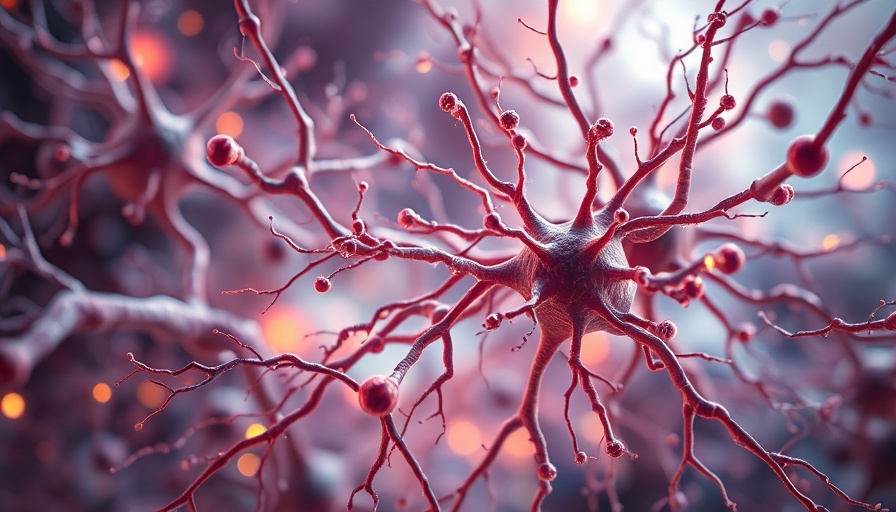
Unlocking the Secrets of Autism: The Role of Nerve Proteins
In a groundbreaking study published in PLOS Biology, researchers have uncovered a fascinating connection between a pair of competing nerve proteins and the symptoms associated with Autism Spectrum Disorder (ASD) in mice. According to the research led by scientists from Wenzhou Medical University and Xiamen University, the balance of these proteins plays a crucial role in regulating neuronal activity. Understanding this relationship could pave the way for future therapeutic approaches to ASD.
The Science Behind Autism: Proteins in Play
Autism Spectrum Disorder affects approximately 1% of the global population, characterized by diverse social and cognitive challenges. Previous studies hinted at genetic links to ASD primarily focusing on neuron activity. However, the precise mechanisms have remained elusive. The current study focused on two neuronal proteins: MDGA2 and BDNF (Brain-Derived Neurotrophic Factor). MDGA2 is critical for nerve signal transmission, and mutations in the MDGA2 gene have been linked to ASD in humans.
From Mice to Humans: How Model Organisms Illuminate Understanding
Researchers conducted experiments using genetically modified mice with reduced levels of MDGA2. These mice exhibited behaviors reminiscent of ASD, such as repetitive grooming and altered social interactions. A heightened level of synaptic activity was observed, suggesting that the imbalance in protein activity could lead to significant behavioral and cognitive alterations. These findings illuminate how studying model organisms like mice can offer valuable insights into the complexities of human conditions, particularly disorders like autism.
The Balance of MDGA2 and BDNF: A Delicate Dance
At the crux of the study's findings lies the intricate relationship between MDGA2 and BDNF. The researchers discovered that MDGA2 and BDNF compete for binding to TrkB, a critical receptor involved in neuronal signaling. When MDGA2 levels are reduced, BDNF can activate TrkB more freely, resulting in excessive neuronal excitability. This could potentially explain some of the key symptoms associated with autism, where overactive neuronal pathways lead to disrupted communication between brain regions.
A Promising Target for Future Therapies
What does this mean for the future of autism treatment? The study provides a compelling argument for considering the MDGA2-BDNF interaction as a potential therapeutic target. The introduction of an artificial peptide that mimics MDGA2 to inhibit BDNF/TrkB activity showed promising results, alleviating ASD-like symptoms in the mice. This finding suggests that similar strategies may hold therapeutic potential for human patients, leading to more targeted interventions that address the underlying biological mechanisms of autism.
Understanding Autism: Beyond the Symptoms
While therapies typically focus on managing symptoms of autism, this research brings to light the importance of understanding the biological underpinnings of the disorder. It invites parents, caregivers, and educators to consider a more holistic view of autism, one that integrates scientific advancements with everyday support strategies. Moreover, this new knowledge can help shape educational approaches and advocacy efforts, aiming to create more inclusive environments for individuals with ASD.
Community Response and the Path Ahead
The scientific community has expressed excitement over these findings, as they might lead to innovative treatments. Advocacy groups have also called for funding and support for further research, emphasizing that it is vital to continue exploring the molecular mechanisms of autism. As society becomes increasingly aware of autism, fostering environments that support neurodiversity is more critical than ever. Continued dialogue between researchers, families, and educators will be essential to advance understanding and treatment.
As the narrative surrounding autism evolves, it's crucial for all stakeholders—scientists, parents, educators, and policy makers—to collaborate and translate research findings into actionable insights. This holistic approach can help in addressing the needs and challenges faced by individuals with autism and their families.
In conclusion, this research offers a beacon of hope, presenting a clearer picture of how alterations in specific proteins can contribute to autism symptoms. It underscores the importance of scientific inquiry into unknown territories while continually seeking to improve the quality of life for those affected by ASD. By fostering informed discussions and applications of such research, we can empower individuals and families on the autism spectrum.
 Add Row
Add Row 

 Add
Add 


Write A Comment